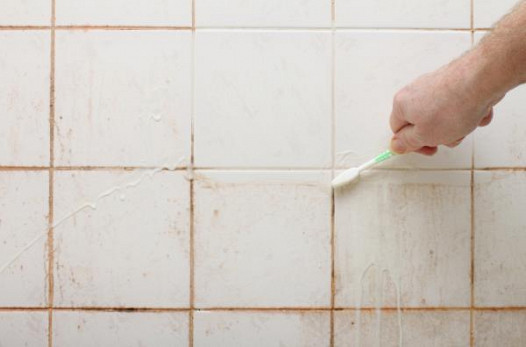What're your opinions on How to Fix a Water Damage Bathroom?

The bathroom is very at risk for damp buildup and possible water damage because of the constant use of water in it. This write-up offers basic examination techniques to assist identifying water damage dangers.
The constant use of water in the shower room makes it exceptionally vulnerable for moist accumulation as well as possible water damage. By checking it consistently, you can decrease water related problems.
The adhering to collection of evaluations is simple to execute and must be done as soon as in every 3 months in order to keep your restroom healthy and also to prevent potential water damages brought on by the bath tub, the shower, pipeline joints and plumbing, sinks, cabinets, as well as the bathroom
Do not forget performing these evaluations and be extensive while doing them. Remember that these straightforward inspections can save you a lot of money by offering early indicators for water damages
Bath tub and also Shower
The shower and also bath tub require special attention and maintenance. Check the tiles and replace if broken. Ensure that there is no missing grout between the ceramic tiles. Check as well as replace broken caulking at joints where the walls satisfy the floor or the tub. Blocked drains and pipes problems will prevent the bathtub from drying out and also might show severe troubles underneath the tub. Talk to an expert right away to avoid structural damage. Pay attention to stainings or soft locations around the tub walls as they may show an internal leak.
Plumbing
Signs for water damages are tough to find considering that many pipes are installed inside the wall surfaces.
Pay special attention to floor covering and also wall surfaces wetness and discolorations as they might suggest an unnoticeable plumbing trouble. Examine wetness levels in adjacent spaces also.
Sinks and Cabinets
Sinks and also cupboards are exposed to dampness and also humidity daily and also are typically neglected. Inspect consistently under the sink as well as on the countertop over it. Fix any drip in the catch as it may suggest drainpipe problems. Look around the sink, sluggish draining pipes might indicate an obstructed drain. Replace sink seals if they are split or loose.
The Commode
The bathroom is a vulnerable water joint. Check the water lines and also search for leakages around the bathroom seat, in the hose, as well as under the water tank. If you find any type of indicators of wetness on the flooring around the bathroom, look for leaks in the toilet edge as well as container seals.
Know that hanging commode bowl antiperspirants enhances the opportunities for blockages.
Water Damage Signs In The Bathroom To Avoid Cleanup
Musty smell
This is one of the easiest signs to catch because musty smells are so odorous. The damp, earthy, moldy smell should be a big red flag. The smell will develop when moisture gets trapped in surfaces, and begins to facilitate mold growth. Leaking pipes under cabinets, inside walls, and behind shower fixtures will cause moisture to stay trapped and not dry, which will lead to mold growth and spread. As soon as you notice any musty smells in your bathroom, have it checked for hidden water damage and cleanup signs.
Visible mold
If the smell isn’t there to give it away, sometimes you will actually see mold growth. Finding mold in your bathroom is a serious problem, because mold is very harmful to your health. By the time mold growth is visible, it also means that water damage has already occurred and been present for some time. The only way the mold problem can be resolved is to find the source of the moisture and get it stopped. To safely and adequately remove mold, you need to have professionals handle the remediation. Do not waste any time in getting mold problems addressed, fixed, and sanitized so that you can protect you and your family from the many respiratory symptoms caused by mold exposure.
Damaged floors
Bathroom floors should be able to withstand some exposure to water while still remaining in good condition. However, when excess exposure or water leaks occur, they will begin to damage even the most water-resistant flooring. If you notice any cracking, bubbling, staining, or warping on your bathroom floors, there is probably a water leak somewhere causing the distortion. If you notice areas of the floor have become softer, or even have a spongy feeling, there is probably damage to the subfloor. Subflooring is typically made up of plywood. When plywood is exposed to water or moisture, it will absorb it. Once it has become saturated, the weight of the excess water will cause the wood to swell and soften. Check the floors in your bathroom frequently to catch any of these sings before they lead to damaged subflooring.
Changes on walls
When water leaks behind walls, it will cause changes in the drywall. Peeling plaster, blistering paint, and soggy wallpaper are all good indicators that excess water is building up behind the wall. Water leaking behind drywall will cause it to swell and be soft to the tough. If you start to notice gaps along the trim of your walls, or where tile meets the wall, it could also be a strong indicator that there is a leak behind the wall. Any changes, distortion, or damage on the walls should be evaluated as soon as you notice it to prevent further water damage and cleanup.

Do you like reading about Common Causes of Water Damage in a Bathroom? Try to leave a remark down below. We'd be glad to hear your views about this review. In hopes that you visit us again in the near future. Sharing is nice. Helping people is fun. Bless you for your time. Please stop by our site back soon.
Get Estimate